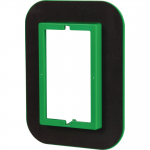goldstar
Senior Member
- Location
- New Jersey
- Occupation
- Electrical Contractor
I doing a complete 1st floor remodel at a residence. I have not installed any air-tight JB's but I'm thinking in advance in case the EI or BI suddenly and mysteriously decides they want air-tight JB's installed in the outside walls. The air-tight JB's that I see on the market seem quite expensive. Is there an after-market seal or flashing that can be installed after the insulation is on and before sheet rock is installed if I have to do this?




